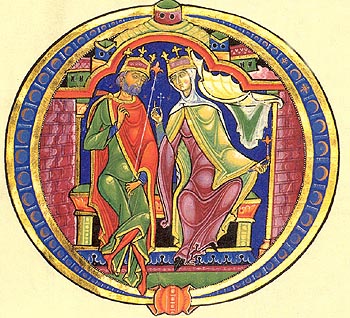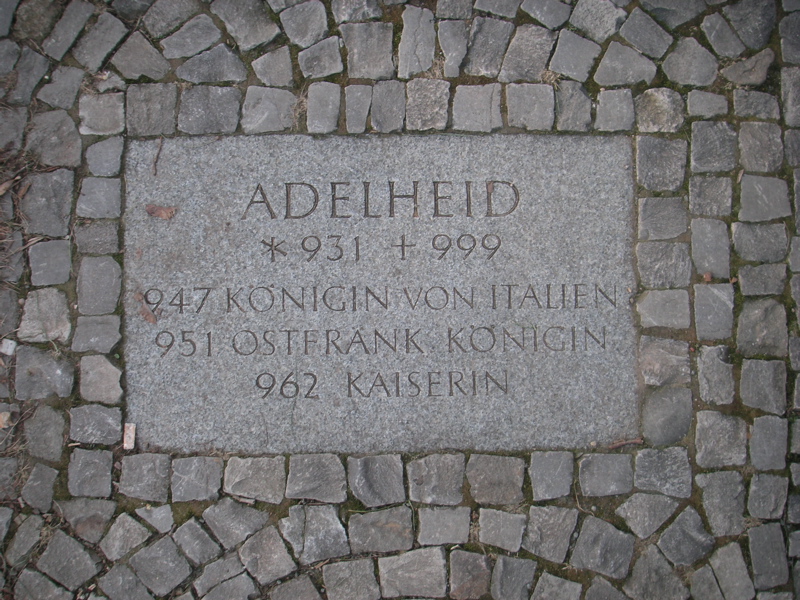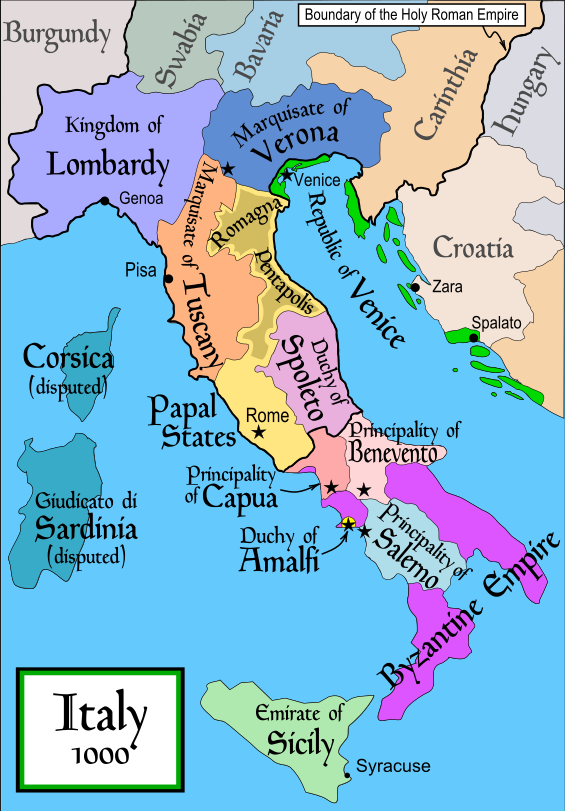 December 16th is historically the feast of St. Adelaide or "Adelheid," which in German means "nobility." Most people are probably only familiar with the name as that of a large city in Australia. Devotees of children's literature may remember that in the classic, Heidi, the heroine's full first name is "Adelheid," only used by the strict housekeeper Fräulein Rottenmeier, who disapproved of the common-sounding nickname. "Heidi."
December 16th is historically the feast of St. Adelaide or "Adelheid," which in German means "nobility." Most people are probably only familiar with the name as that of a large city in Australia. Devotees of children's literature may remember that in the classic, Heidi, the heroine's full first name is "Adelheid," only used by the strict housekeeper Fräulein Rottenmeier, who disapproved of the common-sounding nickname. "Heidi."
Just as the fictional Adelheid, the saintly Adelaide also was born in Switzerland, and her life was so full of the stuff of dramatic novels that the composer Giacomo Rossini (famous for The Barber of Seville and William Tell) even wrote an opera about her. She was the daughter of a king -- Rudolph II of Burgundy -- and was betrothed at the age of two as part of a peace treaty. Her father and Hugh of Provence had been at war over the crown of Italy. In 933 the rivals came to peace terms, with Hugh getting the Italian throne but also promising that Adelaide would eventually become his daughter-in-law. At the age of 15, Adelaide married Hugh's son, Lothaire. By this time a villain had come on the scene -- Berengarius of Ivrea -- desiring the throne of Italy for himself. This powerful man forced Hugh to abdicate in favor of the weaker Lothaire, who suspiciously died soon after, probably poisoned. Before of her husband's death, Adelaide had given birth to their only child, daughter Emma.
Berengarius, now King of Italy, tried to force Adelaide to marry his son, Adelbert. She refused and fled, but was hunted down and imprisoned in a castle on Lake Garda. The 18-year-old Adelaide did not sit pining in captivity; she escaped four months later with the help of a priest, who dug a tunnel to the castle and then hid her in the nearby woods and marshland until he could obtain further aid. The Duke of Canossa, learning of her plight, carried her off to the safety of his impregnable castle. Berengarius soon discovered Adelaide's whereabouts and began a siege of the castle.
Meanwhile, the Italian nobles were tiring of Berengarius' reign and did not resist when the German king, Otto I, invaded Italy. Otto was also encouraged in his campaign by Pope Agapitus II, who hoped the German monarch would bring some order to the northern realms of Italy. The besieged Adelaide sent a message to Otto, begging for rescue and protection. Otto drove Berengarius from Canossa and Adelaide was freed from her danger. A marriage between the widower Otto and the beautiful, wealthy, widowed queen was suggested by someone (perhaps Adelaide herself); and since there were no objections, the 38-year old Otto married the 19-year-old Adelaide on Christmas day in 951. Adelaide had five children with Otto -- three sons and two daughters. Adelaide's popularity with her people and her romantic story helped to make Germanic rule over Italy easier to accept. Otto also was the great- great- great grandson of Louis I, son of Charlemagne, and so had a claim to the imperial throne. In 962 Pope John XIII crowned Otto, Roman emperor and Adelaide, empress.
 |
| The thick red line indicates the borders of Otto I's empire |
Although Adelaide's resentful stepson from Otto's first marriage caused some political turmoil, the next ten years of her life seems to have been mostly free from drama. Then in 973 her husband died and their eldest son, Otto II, succeeded to his father's throne. Otto II had married the Byzantine princess, Theophania. Theophania, jealous of her mother-in-law's popularity and resentful of her generosity to the poor, turned her husband against his mother and made things very uncomfortable at court. Adelaide took up residence with her brother, Conrad, in Vienna. The Abbot of Cluny was successful in bringing about a reconciliation, with Otto begging his mother's forgiveness; and Adelaide returned to court.
 |
| Empress Adelaide and Emperor Otto I |
Alas, the reconciliation seems not have been deep or lasting with Theophania; for when Otto II died in 983, trouble again arose. Since Otto's son -- Otto III -- was a baby, Theophania became regent, ruling the empire during her son's infancy. Without her son's sympathy and protection, Adelaide thought it best to leave the court again. However, Theophania died suddenly in 991, and so the dowager empress returned to court to act as her grandson's regent. From thenceforth, Adelaide's life seems to have been peaceful, but not inactive. Throughout her life she had many churches built and founded and supported many monasteries, being especially close to the Benedictines of Cluny and its abbots, St. Majolus and St. Odilo (who later wrote her biography). She was zealous for and promoted the evangelization of the pagans in the North, especially the Slavic peoples. She was described as gentle and forgiving, gracious, wise, and a devoted daughter and guardian of the Church. In her last year of life, she undertook a trip to Burgundy to attempt a reconciliation between her nephew Rudolph III and his rebellious subjects. However, she died on the way at Seltz Abbey in Alsace on December 16, 999.
It seems that St. Adelaide was a fascinating medieval woman, definitely a worthy subject matter for an opera, as well as canonization.
.
 |
| A stone marker at the cathedral in Magdeburg, Germany commemorating the reign of St. Adelaide "Queen of Italy, Queen of the East Franks, Empress" |

No comments:
Post a Comment